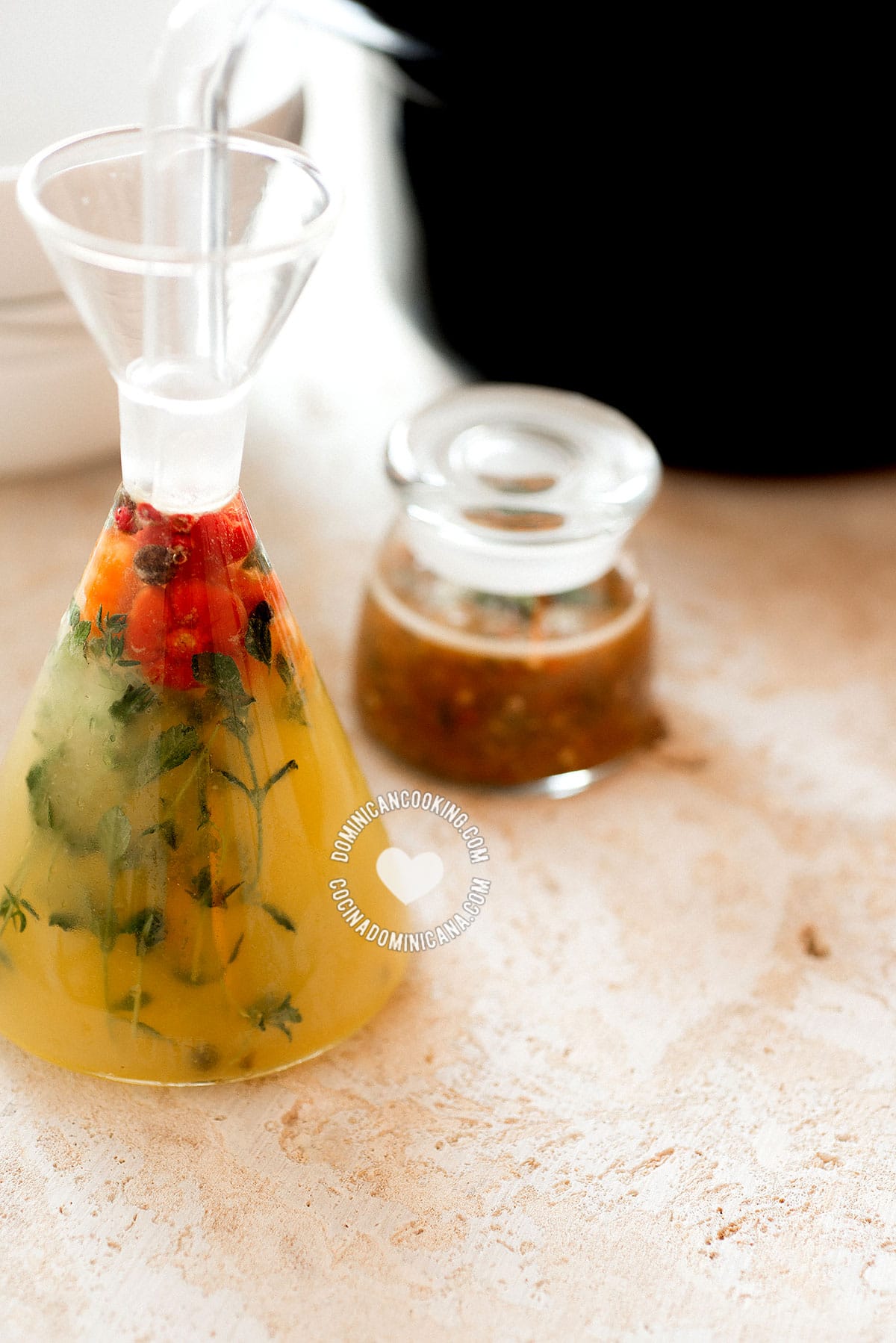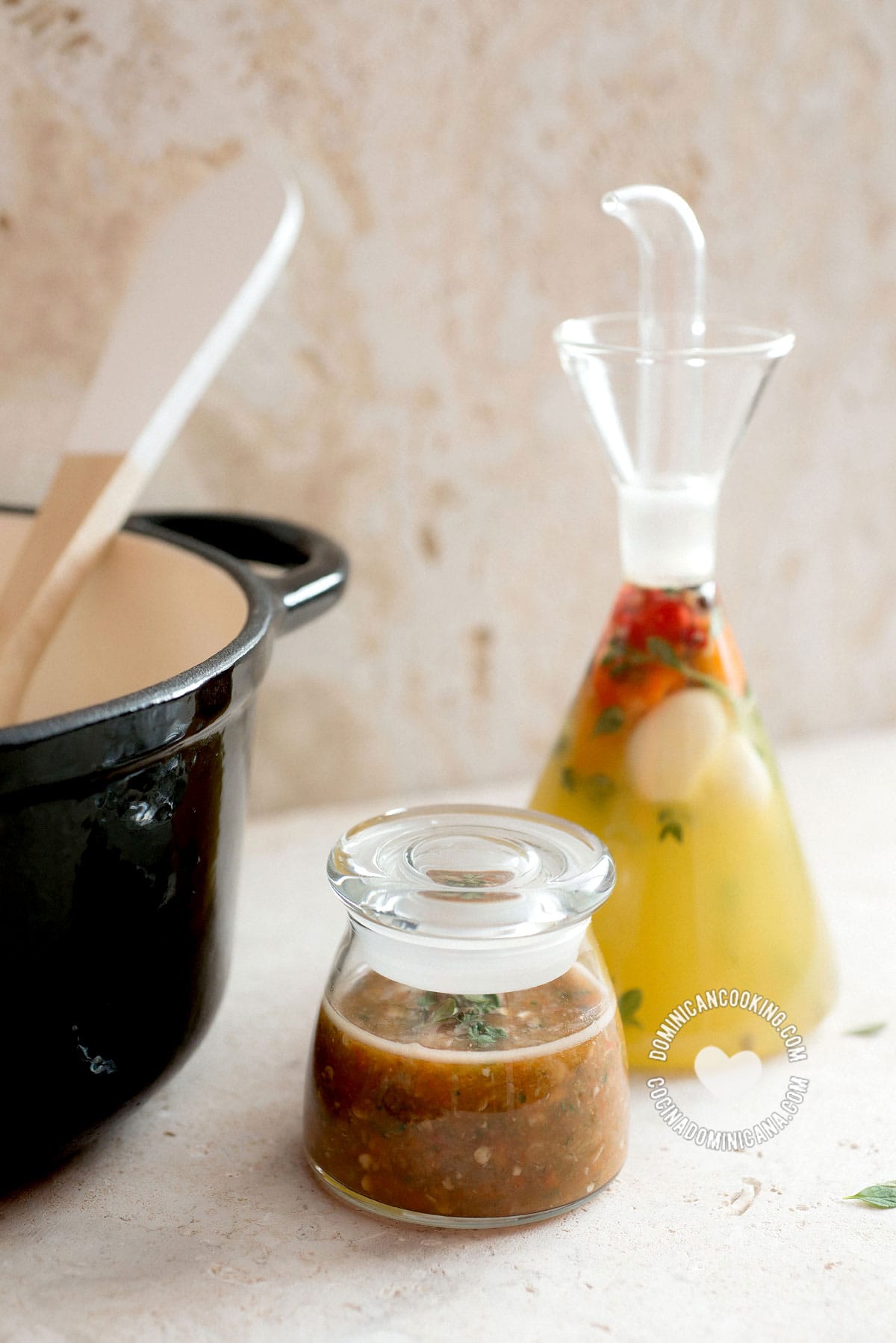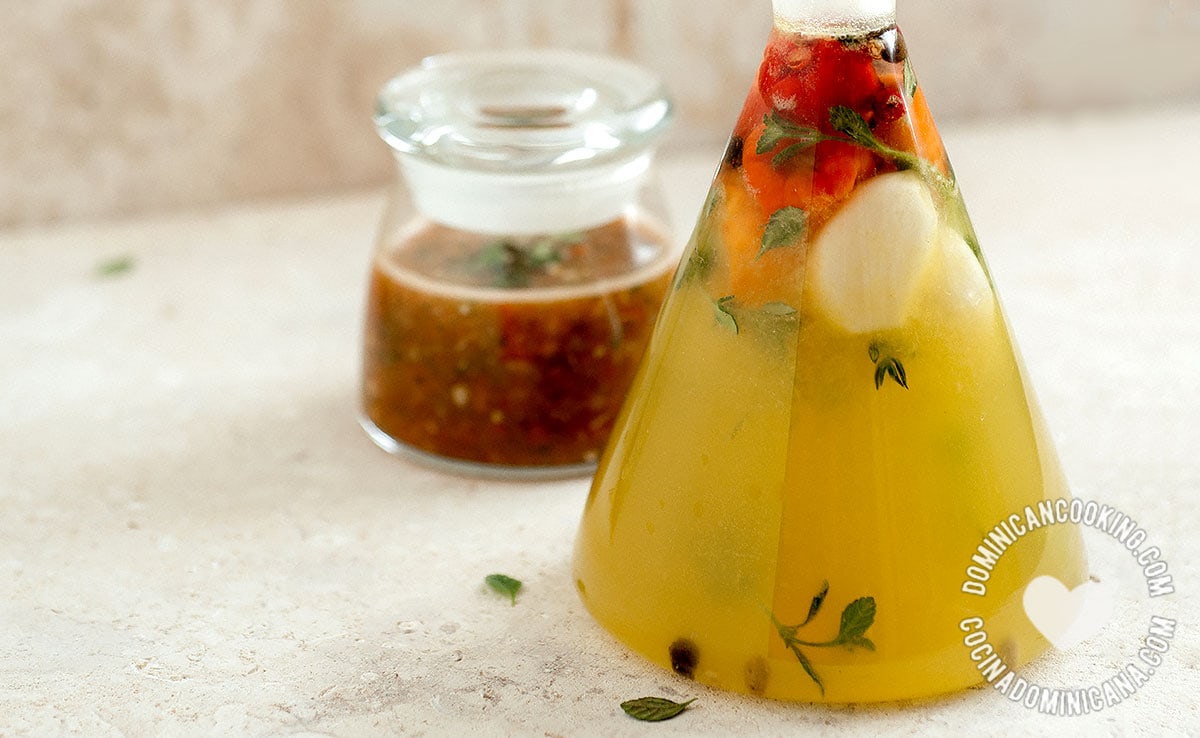Agrio de naranja is an exclusively Dominican hot sauce, homemade and without preservatives. It gives the touch that is missing to any dish, and is perfect as a gift for friends and family.

Why we ❤️ it
Without agrio de naranja, there is no sancocho. They are like Batman and Robin, like Kalimán and Solín…
A homemade agrio de naranja (I have never seen it industrially produced) elevates the tastes of a tasty sancocho or asopao, and is indispensable for a rabo encendido that deserves the name. It is also easy to make and with relatively readily available ingredients.
If you haven't noticed yet, I'm a sucker for homemade, natural and frugal, and this is something that hits the trifecta. Let me share this "secret" with you.
What is it?
Agrio de naranja is a uniquely Dominican spicy sauce, homemade, and preservative-free. It arrived on our tables well before famous bottled brands arrived in our colmados. It adds the kick your stew might be lacking.
Bitter oranges
Dominican Agrio de Naranja is primarily made with bitter oranges. Bitter oranges are the ugly stepsisters of the citrus family. Not only do they have rough, thick skin (it is usually green, but also come in orange), they are also very sour and with a touch of bitter that makes them useless for the same uses as limes and oranges. Despite this, they are used extensively in Dominican cooking as an ingredient in meat dishes (used to scrub meat before cooking), and as the main ingredient in this recipe.
Ajicitos (spicy peppers)
Another ingredient used in this recipe is hot peppers. As you probably know (or suspect), not all hot peppers are created equal. The variety that is most commonly used in our cuisine is the Scotch bonnet pepper, those deceptively cute round peppers that look treacherously like the sweet variety also used in our cuisine (we call the non-spicy ones ajíes gustosos, or "flavorful peppers").

About this recipe
Now, what's with the sauce in that picture? Lest you think it was my idea, I have to confess I found this served at one of our favorite traditional Dominican eateries, Típico Bonao. The good old homemade vinegar gets all the more potent when blended, something we can appreciate in this home of spicy food lovers.
Something important about the traditional vinegar is that it is usually left to ferment (as are all vinegars). I am not entirely convinced my university chemistry classes allow me to go down that route. I like some fermented foods (guarapo de piña, for one) but this can be a little risky.
If you want your vinegar to ferment don't add the salt and keep it outside the refrigerator long enough for it to start to ferment, then refrigerate. Do this at your own risk. Since I find the fermentation does not add anything in the way of flavor, I add the salt (it makes it inhospitable for bacteria and yeast) and keep mine refrigerated at all times. I also prepare mine in small batches to keep it fresh.
Yes, I am a wuss.

Recipe

Agrio de Naranja Recipe (Spicy Bitter Orange Vinegar and Sauce)
Ingredients
- A large, clean glass bottle or jar
- 5 bitter oranges
- 10 Scotch bonnet pepper, halved
- 3 clove garlic, halved
- 3 sprigs oregano (fresh)
- 1 sprig thyme (fresh), (optional)
- ½ teaspoon of kosher salt, (or whatever salt you have)
- 1 teaspoon peppercorns, (optional)
Instructions
- Preparing: Wash the bottle or jar with soapy hot water, rinse well and let it dry completely. Wash the sour oranges and halve. Squeeze the juice and sieve.
- Making it (two ways)- To make the vinegar: Fill up the bottle with the bitter orange juice and add the remaining ingredients.Macerate for a few days in the refrigerator.- To make the sauce: Mix the bitter orange juice with the remaining ingredients (only use the leaves of the herbs), and blend until it turns into a coarse paste.
- Storing: Pour into a bottle or jar and keep refrigerated.
Tips and Notes
Nutrition
Nutritional information is calculated automatically based on ingredients listed. Please consult your doctor if you need precise nutritional information.




